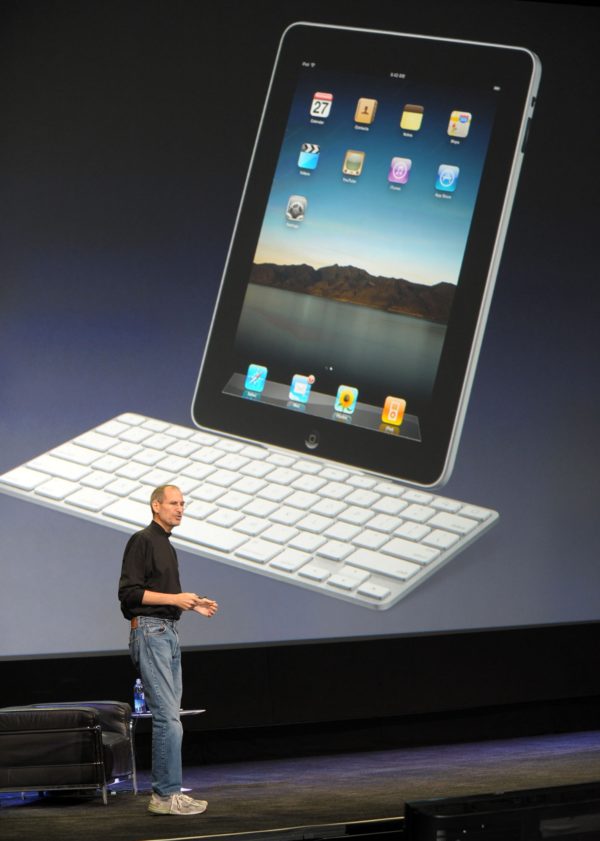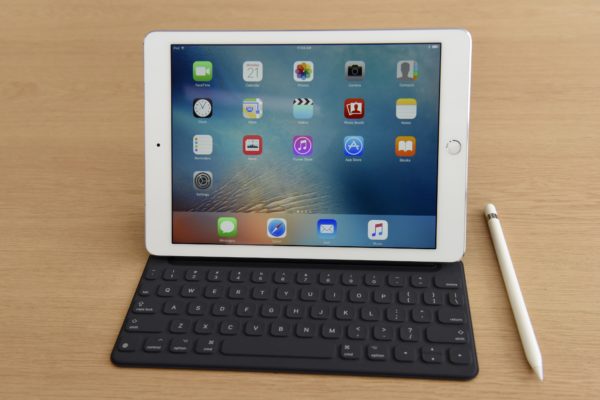The story of the iPad goes way back beyond before the phone. It started out as this project called Q79. Q79 was the product that was built around multitouch exploration. So we were, at the time, looking at “How can we actually move computing forward? What’s wrong with the Mac? And what’s keeping it from being really, really more responsive and more direct?” A lot of those questions are answered in terms of “How do we actually achieve a more direct and more responsive input through multitouch?” and that program was built around creating a product line called Q79. At the time, it was looking at bringing a multitouch screen to a Macintosh laptop. Specifically the iBook, at the time. It turned out that was a really, really expensive endeavor and it just wasn’t really going to be successful for Apple to build a super expensive computer coming off of having released the Cube, which didn’t do well. We kind of pulled away from that effort and focused on a much smaller thing, which was the phone. When we resurrected the iPad, we knew that it was always designed as a computerand it was literally the perfect playground for multitouch. The phone was the first delivery mechanism but we always knew that we wanted a desktop class face to run applications for multitouch.
When it was first designed, we were imagining how people were going to use it in this space. So we created this dock that gave you the opportunity to mount it to a keyboard and so that it could look like an iMac class thing. Again remember, we were always designing this as a computer to begin with, but it wasn’t as powerful as a computer at the time.

I think it’ll be interesting for all of us to watch and see how Apple evolves the iPad. But, you know, I think one of the struggles that customers have with the iPad right now is really trying to figure out what role it plays in terms of a portable class computer. You have a traditional desktop computer or a traditional laptop computer — and where does the iPad fit in? You know, I would hope and I think they would continue to evolve it to a point where the iPad does end up doing a lot more that the Mac [currently] does and that the Mac redefines itself as more of a professional tool and the iPad defines itself as more of a mass consumer computing platform. I think that would be almost like a natural progression.
I’m really proud of the fact that we were able to start that and have that trajectory continue through today and that this product in particular means so much to so many people. …It’s an amazing learning tool. It is so many things to so many people. And that is what great computing is all about.

I think what we originally envisioned was designed as a consumption device.One of the things that Steve had in his, like, mini-brief for it was “I really want to be able to use this for mail while sitting on the toilet” and that level of consumption and ease was something that went into us wanting it to replace your newspaper and wanting it to replace the books in your life. And I think the one regret that I have is that we weren’t as successful in going through and replacing the textbooks that kids have to use today in school. I think we started there, but we never could really push off on that. I think a lot of that is really driven by business decisions and the gravity of the phone and the app ecosystem [being] so big. But, you know, I think our vision of making it so that kids weren’t lugging around massive backpacks full of books is something that I wish we were able to do, but we weren’t during our time …that would be one regret.
